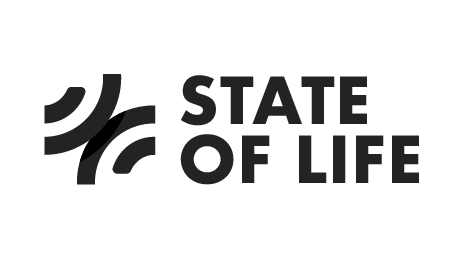A new gold standard for measurement and evaluation, plus praise for the new WELLBY measure
The new gold standard
27th July 2021 saw the release of the HMT Treasury Green Book (the gold standard of policy and project evaluation) supplementary guidance on wellbeing. The guidance is a superb piece of work and gives an excellent overview of wellbeing, the theory, science and then practical advice. And it also introduces a new, simpler measure of economic value that State of Life have been using for a year now - the WELLBY.
It’s fair to say that at State of Life we’re celebrating this like an Olympic medal.
The newest guidance upgrades wellbeing impacts to a central role in the assessment of the benefits and costs to society. State of Life have been doing this since 2017 and our process is spelled out in the State of Life 3 steps to social value. Below is where the new guidance and the WELLBY fit in with the State of Life approach - the phrase ‘fits like a [BMX] glove’ springs to mind.
1: Outcomes - what is a WELLBY?
The WELLBY is short for “Wellbeing-adjusted Life Year.” The term has been defined and refined by Paul Frijters and Chistian Krekel in a draft working version of their Handbook for Wellbeing Policymaking in the UK in 2020. It is defined as a change in life satisfaction of 1 point on a scale of 0 to 10, affecting one person for one year.
What this means is that the new guidance and the WELLBY endorses and supports the widely held view that overall Life Satisfaction is the best survey question to measure personal wellbeing (almost always alongside associated drivers of life satisfaction, e.g. employment, physical activity, volunteering, mental health, community wellbeing, education and skills development and socio economic status).
The good news is that Life Satisfaction and all of the associated drivers of wellbeing are precisely those that State of Life includes in our free surveys and survey bank.
2: Impact, monitoring and evaluation.
This is the crucial step and is detailed in Chapter 5 of the guidance. It involves the estimate of the causal effect of the programme on wellbeing / life satisfaction - or how many WELLBYs your project is responsible for generating. Essentially the difference between the average life satisfaction of the treatment group (subject to the programme) and a control group (not subject to the programme). And then also the number of participants in the programme and average duration of the wellbeing effects brought about by the programme.
The tricky part is to ensure that the inputs listed above are accurate and this is the crux of social value. Crucially for us, alongside putting forward the WELLBY, the new wellbeing guidance from the Treasury endorses the State of Life approach to “use validated measures...that are consistent with existing measures” that also provide that crucial comparison and control group data set.
3: Value
This is perhaps where the WELLBY heralds a very welcome mini revolution in social value. Previous methods were a little opaque and protected behind proprietary business models. The WELLBY offers the sector a very simple, open valuation method that can be used once the more involved job of establishing causal impact (step 2 above) has been completed properly. Another big benefit of the WELLBY is that the value is pegged to the NHS QALY (Quality-Adjusted Life Year) which is used by the NHS to judge the cost effectiveness and value of health interventions e.g. drug efficacy. In our view this gives the WELLBY an extra layer of credibility and relevance as a measure of wellbeing and preventative health.
1 WELLBY (an increase of 1 on a 0-10 scale of Life Satisfaction for 1 person over 1 year) is given a value of £13,000 (2019 price levels), with a lower bound of £10,000 and an upper bound of £16,000. So this is a value that is open to all to see, use. Bravo Green Book.
Note that both the lower and upper bound are based on wellbeing valuation methods which gained a lot of prominence recently and were summarised in the latest technical paper by State of Life on the subject of wellbeing impacts measurement and valuation - Faith, Hoops and Charity.
State of Life has already used and referenced the WELLBY in our studies on the economic and social value of the Church ‘House of Good’ and more recently in a comparison of the wellbeing impacts of activity, volunteering and church attendance, ‘Faith, Hoops and Charity’. These are the first reports to use the WELLBY.
What a result, a real turn up for the Green Book...
What this all means is that State of Life is now perfectly placed to assist you in elaborating the best design of an evaluation framework for the wellbeing impacts of your programme/activity, ensuring the most robust possible research methods given the project budget, drawing upon other well-established studies in the field and using benchmarks from national data where possible.
Coaching you to use the WELLBY
But crucially we can now, using a Green Book endorsed methodology and open data tools, coach you and the wider sector in how to build your in-house capability to measure wellbeing in line with best practise.
We already train our clients at Essex Council, Girl Guiding and Duke of Edinburgh in this.
We have a survey bank of outcomes, technology to collect the data, the WELLBY to value the impact. You may only need help in set up, analysis and reporting.
Th th that’s all folks.

